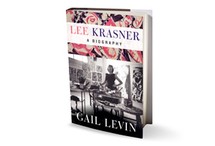18 Books to Watch for in April 2011
From hard-boiled detective fiction like Edward Conlon's Red on Red to the social science breakthroughs in Tina Rosenberg's Join the Club, April's got something for everyone.

Photo: Philip Friedman/Studio D
3 of 18
Lee Krasner: A Biography
By Gail Levin
560 pages;
William Morrow
Art historian Gail Levin's Lee Krasner
(William Morrow) is a quintuple whammy of a biography—the story of a
major artist; a description of a notorious marriage; an education in
20th-century art; a gossipy immersion into bohemian New York; and a
settling of scores against those who practiced gender bias (one teacher
said of her work, "This is so good you would not believe it was done by a
woman"). Born in Brooklyn in 1908, Lena Krasner evolved from schoolgirl
into starving art student who worked in FDR's WPA program. When she
became involved with Jackson Pollock in the early '40s, Krasner was
already part of the New York art scene, a friend to painters like Willem
de Kooning; she never complained that her own work was eclipsed by
Pollock's. "Sure it was rough. Big deal," she said. "I was in love with
[him] and he was in love with me. He gave an enormous amount, Pollock.
Of course, he took, too." After his car-crash death in 1956, she
continued to nurture his reputation while rediscovering her own style.
By the time Krasner died in 1984, she was recognized as one of the
pioneers of Abstract Expressionism. As she said in 1973, "The only thing
I haven't had against me was being black. I was a woman, Jewish, a
widow, a damn good painter, thank you, and a little too independent."
— Liza Nelson
Published 03/24/2011


